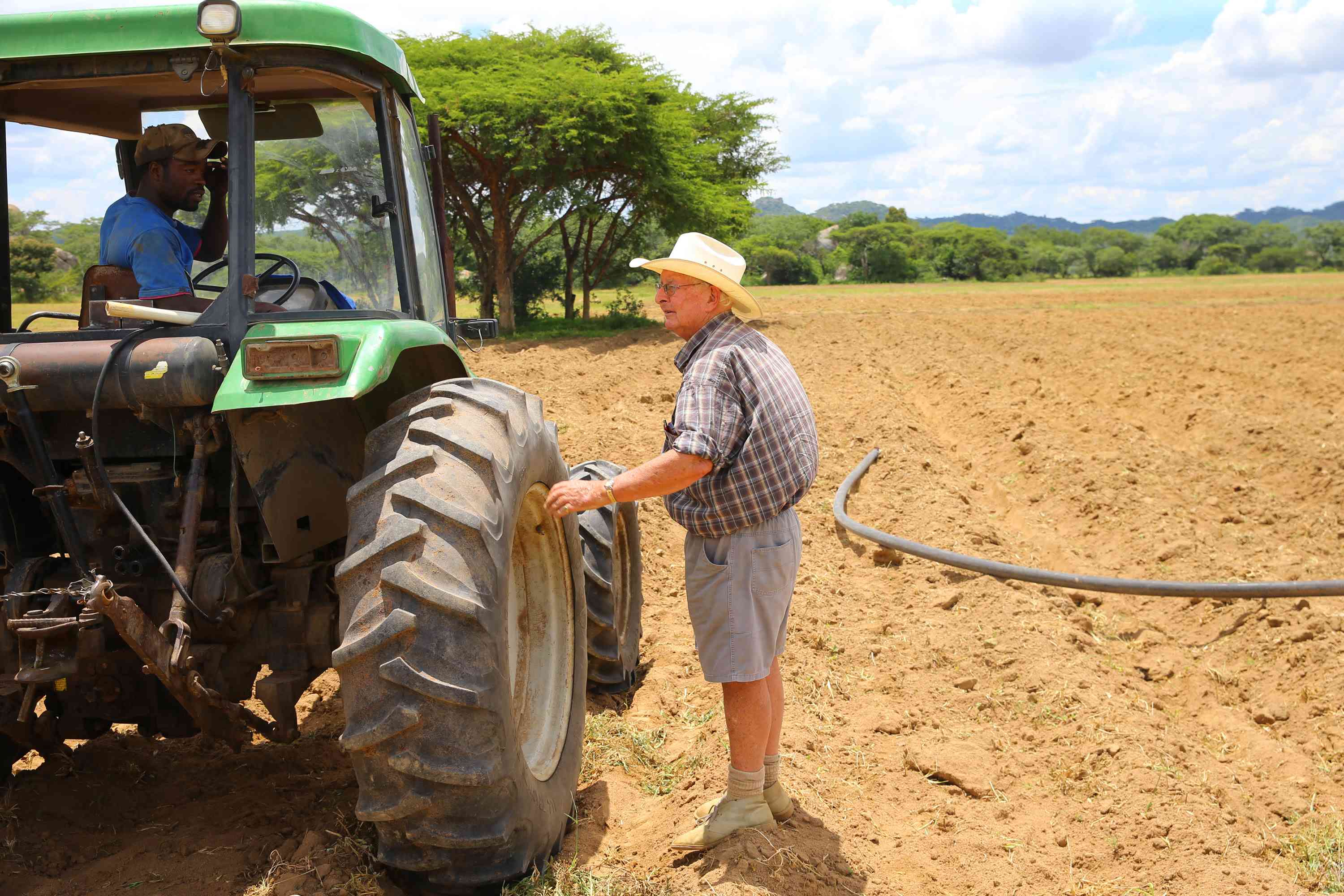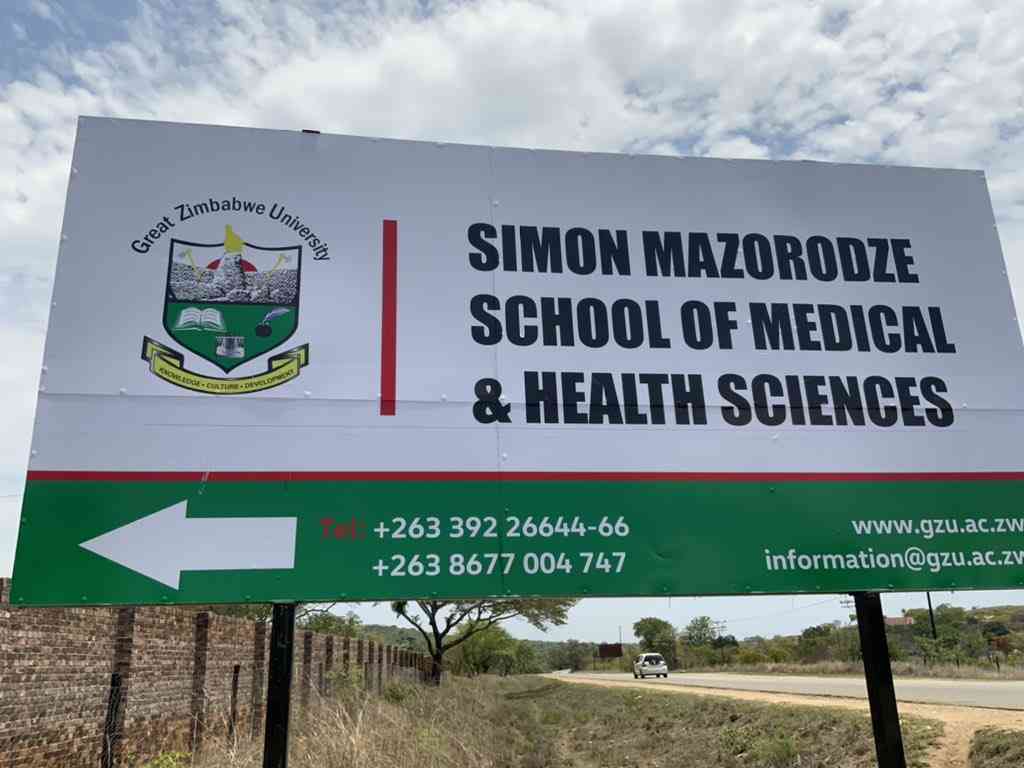
I covered land invasions every day for seven years.
The first land invasion took place shortly after the arrival on the political scene of opposition politician and former trade unionist Morgan Tsvangirai and the Movement for Democratic Change in September 1999.
In early 2000, a referendum was held for a new Zanu PF-designed constitution. Voter turnout was low, but the constitution was rejected in considerable part because of the MDC’s influence. Then came the general election and the party came within five parliamentary seats of ousting Zanu PF.
That sparked President Robert Mugabe’s tacit approval to some senior war veterans to launch land invasions. It’s unlikely Mugabe appreciated the massive scale the invasions would reach.
“Legacy” white land ownership was only guaranteed by the Lancaster House agreement (which ended white rule) for 10 years, from 1980 to 1990. Since then, there had been years of threats to take white-owned land without compensation, but the land grabs were sparked by political upheaval and the threat to the ruling party’s majority.
At first, it was difficult to know what was going on. Each invasion was different. We often didn’t see the invaders. From time to time we saw ministers at some farms, but it wasn’t clear why they were there. Later it emerged that many were acquiring their own farms.
I also established that President Robert Mugabe bought a commercial farm, Highfield, in the early days of the land grab from an anxious white farmer, and then took note of his wife Grace’s voracious appetite for farms.
The invaders we saw in the early days were usually not war veterans but were mostly hired by them and were usually unemployed, under-educated youngsters. Many needed alcohol to give them courage.
- Mavhunga puts DeMbare into Chibuku quarterfinals
- Bulls to charge into Zimbabwe gold stocks
- Ndiraya concerned as goals dry up
- Letters: How solar power is transforming African farms
Keep Reading
Face-to-face, the real war vets were different from the thugs they hired. I never had a rude word with a bona fide war vet.
The invasions began on tobacco farms, which were seen as wealthier farms and were in the main rain belt about 150km north and southeast of Harare.
The first serious invasion was about 120km south of Harare and the white farmer, a South African by birth, who was liberal compared to some of his neighbours, was killed. This was not a typical invasion as we learnt later, but it made international headlines.
There was a terrible case in 2000 in the dry Matabeleland province, where a farmer resisted the invasion and thugs called in from other parts of the country by Zanu PF leaders went to that farm and killed him, mainly because he had tried to fight back.
Most informed observers from that period appear to agree that a total of 14 white farmers were killed as a direct result of land invasions.
One I followed for days began with youths, some of them drunk, throwing stones on the roof, and then starting to throw stones at windows.
Some farmers, however, were physically threatened by thugs and fled in fear for their lives; some saw their pets, their dogs or horses killed, and, occasionally, their houses attacked. Some farmers would just take whatever they could stuff into their bakkies and leave, mostly for Harare or the nearest town.
Shortly after the land invasions began, Chief Justice Anthony Gubbay, who had ruled land invasions illegal, was forced to resign after the government warned him and other judges they would not be protected after Zanu PF supporters vowed to “kill the judges”. The independence of the judiciary ended at that time and it never recovered.
During the school term, most white farmers’ children above about eight years old were at boarding school. As invasions intensified, some white farmers’ wives would grab their younger kids and take them to the nearest town – effectively abandoning their homes.
There were many thousands of farm workers living on farms with their families. We discovered later that some helped the war vets because they had been promised assets by war vets’ teams. Usually, they got nothing, and when the penny dropped, they became angry with the war vets and/or their hirelings, and some stepped in to help the white farmer.
Farm workers’ lives during ongoing invasions were hell. Many became hungry and desolate and their families suffered enormously.
After the 2000 election, Mugabe took away the vote from registered farm workers, saying they were foreigners: ie they had come from Malawi or Mozambique, and some of them had, but even those who were third-generation born in Zimbabwe lost their vote.
Most farm workers married other farm workers on other farms within the white commercial farming sector. Few of the farm workers had access to the Tribal Trust Lands, set up by British legislation in 1934, which was, in effect, rural apartheid.
Most farm workers’ kids had access to schools and some healthcare on the farms. When the farmers left, there was nothing for them and no funds to keep these institutions going.
But many stayed on in the small housing on the farms, and some are still there today.
By the time of the presidential elections in mid-2002, the land grab was in full swing and there was growing violence on the farms and against mainly urban opposition supporters.
Most land invasions seemed to begin and end within a week. As time passed, some farmers realised there was no point in resisting and left immediately without any “improvements” — equipment, tractors, ploughs, furniture and so on.
A small minority, probably fewer than 50, got to Harare after the invasion, booked an air ticket and left the country never to return.
Many others believed something would be done to get them back on to the farms.
The Commercial Farmers Union, CFU, (more than 99% of the members were white) put out alerts day and night about the invasions, which went out on people’s phones and into their laptops. So they were well-informed.
The CFU president at the time said his main focus was to save lives, not farms.
Land which was earmarked for confiscation was mostly alongside the Tribal Trust Lands (TTL) which meant that for years, farmers alongside TTL found it difficult to sell their farms.
So the white farming community knew by this time that land ownership near TTL, even via title deeds, was unstable, but each white farmer who did sell land at this time had to get a stamp on the title deed from the government, which said, “No present interest.”
Some white farmers were careless; they didn’t notice the word “present”, or chose not to see it, especially speaking to journalists, and there are reports from that time saying the government had broken its word.
In fact, it hadn’t, but no one expected land invasions would be so massive: more than 5,000 title deeds and maybe more than 4,000 farmers. Some farmers went to court repeatedly and won the right to return to a portion of their original land.
The head of the Dairy Marketing Board, Anthony Mandiwanza, bought a dairy farm from the previous owner, Zimbabwe’s first agricultural minister, Denis Norman, who returned to live in the UK. Mandiwanza told the government Zimbabwe would run out of milk if the invasion of dairy farms continued.
Emmerson Mnangagwa, in Robert Mugabe’s cabinet, quietly put out orders that dairy farms should be left alone, but many had already been destroyed. Mnangagwa offered some kind of protection to a few white dairy farmers and other farmers within his home area, around Kwekwe in the midlands, and those farmers remain loyal to him.
All these years later, Zimbabwe still imports long-life milk from South Africa and locally produced dairy products are insufficient for the market.
The land grab had different impacts on agriculture in different areas.
Tobacco farming has recovered well and yield is now higher than it was before the land grab.
Some new black farmers who were given large tracts of white-owned land – usually seniors within Zanu PF – have done well, growing tobacco in much the same manner as their predecessors.
Some of the invaders hired displaced white farmers to farm for them, and others leased the land back to the original white farmers, who know they no longer own the farms they rent.
Nearly all the coffee farms in eastern Zimbabwe were taken and all but two never produced again: Ditto horticulture, which began in the east and landed up with massive exports, including proteas to Amsterdam.
That all ended. So too did much citrus production, nuts, soya and fruit. Vegetables such as potatoes disappeared for a while, as did tomatoes. Today, many vegetables in supermarkets are imported from South Africa.
At the start of the land grab in 2000, small-scale black farmers grew most of the maize: white farmers would largely only grow enough for their workers’ needs as there was little profit in this crop.
Zimbabwe had a far better system of extension services for agriculture than South Africa, and there was good in-house and technical training for black farmers both before and after independence.
Informal arrangements had also expanded over the years between white and black farmers after independence: a key one was that many white farmers would order seed and fertiliser from town ahead of spring planting, and would also carry some of the same stock on their trucks for neighbouring small-scale black farmers.
When the white commercial farmers disappeared, this informal transport system for small-scale farmers’ seed and fertiliser stock collapsed and the small farmers could not afford their own transport.
That was one reason there was almost no maize grown in some areas in the first few years of the land grab.
By 2004 there was almost no locally produced maize available, and for the first time in Zimbabwe’s history, the World Food Program had to enter Zimbabwe and set up an office to distribute food aid to millions of people.
In southern Zimbabwe, in the Matabeleland province, it was quite different as these huge, white-owned farms – some as big as 60,000ha – were ranches. Very few crops were grown in this dry part of the country. Many ranches were taken from white farmers. Most pedigreed cattle died and Zimbabwe’s beef exports to the EU collapsed.
The hugely valuable extension services largely disappeared for various reasons, including the shortage of foreign currency for fuel to provide officials with transport to visit the farms.
There have been success stories. Some new black farmers have done well, including the majority of those who were given small pieces of white-owned land which they would never have been able to afford before the land grab.
Many in this sector use relatives who often live on the land as labourers, who don’t have to be paid, which allowed a huge number of small-scale tobacco farmers to emerge.
They succeeded in improving their lifestyles and they upgraded their farming practices, including developing new marketing and barter techniques.
But there are, even after all these years, massive chunks of fertile land around Zimbabwe in the crop-growing parts of the country which are fallow.
Mismanagement of land reform left Zimbabwe bankrupt as hyperinflation took over and supermarkets were emptied by 2008.
The land grab detonated the state’s land bank which previously financed commercial agriculture, and funding of crops each season has largely been taken over by the state with massive accusations of corruption and mismanagement of state funds.
Commercial banks continue to say they cannot fund crop production without security for loans, such as title deeds. All formerly white-owned land is owned by the state.
There are ongoing debates about 99-year leases for those now occupying former white-owned commercial farms, and progress on these leases is both slow and chaotic.
Among recent farming successes – despite all the post-land grab hazards – is the massive increase in the production of wheat in the 2022 winter season.
In the 2023 wheat season (if last year’s growers have now been paid), some commercial banks indicated they are funding some of the current wheat crop.
Maize production has expanded into peri-urban areas, even into the centre of towns – wherever there is a patch of vacant land – which has helped some urban people feed themselves more easily in summer.
Compensation for “improvements” on white-owned farms taken since 2000, was agreed three years ago at $3.5bn, but the government says it cannot afford that amount and no new agreement has yet emerged which is accepted by the mostly old, surviving white farmers who still live in Zimbabwe and in other parts of the world.
Zanu PF has always said it would never compensate white farmers for the value of the land taken as that must be paid by the colonisers – the British.
A few Dutch citizen/farmers were paid by their home government in the past 10 years and Zimbabwe accepted the bill from the Netherlands, but has been unable to pay the bill. DM
Watch out for Part Three in this series on how South Africa’s elite benefitted from the land grabs.
- Peta Thornycroft received a Lifetime achievement award from the International Women’s Media Foundation at a ceremony in New York in 2007 in recognition of her journalism in dangerous places throughout southern Africa. After attending the University of KwaZulu-Natal, she began her career at the Daily News in Durban and went on to cover apartheid murderers, wars in Angola, Zimbabwe, and Mozambique and South Africa’s secret chemical and biological warfare projects. While covering land grabs and the rise of the opposition Movement for Democratic Change, she was arrested and imprisoned for six days in eastern Zimbabwe in 2002.










